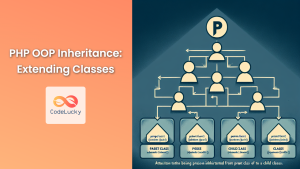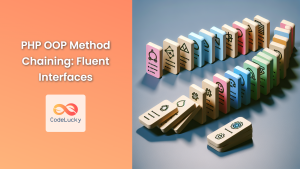PHP Reflection is a powerful feature that allows developers to introspect and manipulate code structure at runtime. It provides a set of classes and methods that enable you to examine, analyze, and even modify the properties, methods, and structure of classes, interfaces, and functions. This capability is particularly useful for creating flexible and dynamic applications, debugging, and building tools like documentation generators or dependency injection containers.
In this comprehensive guide, we'll dive deep into PHP Reflection, exploring its various components and demonstrating how to leverage this powerful feature in your PHP projects. 🚀
Understanding PHP Reflection
PHP Reflection is built around a set of classes that represent different elements of PHP code. These classes provide methods to inspect and interact with the code structure. Some of the key reflection classes include:
ReflectionClass: For examining classes and interfacesReflectionMethod: For analyzing methodsReflectionProperty: For inspecting propertiesReflectionFunction: For examining functionsReflectionParameter: For analyzing function or method parameters
Let's start by exploring how to use these classes to gain insights into our code structure.
Examining Classes with ReflectionClass
The ReflectionClass is one of the most commonly used reflection classes. It allows you to inspect various aspects of a class, including its methods, properties, constants, and more.
Let's create a simple class and then use ReflectionClass to examine it:
class Person {
public $name;
private $age;
public function __construct($name, $age) {
$this->name = $name;
$this->age = $age;
}
public function sayHello() {
return "Hello, my name is {$this->name}!";
}
private function getAge() {
return $this->age;
}
}
// Create a ReflectionClass instance
$reflector = new ReflectionClass('Person');
// Get class name
echo "Class name: " . $reflector->getName() . "\n";
// Get methods
echo "Methods:\n";
$methods = $reflector->getMethods();
foreach ($methods as $method) {
echo "- " . $method->getName() . "\n";
}
// Get properties
echo "Properties:\n";
$properties = $reflector->getProperties();
foreach ($properties as $property) {
echo "- " . $property->getName() . "\n";
}
This script will output:
Class name: Person
Methods:
- __construct
- sayHello
- getAge
Properties:
- name
- age
As you can see, ReflectionClass allows us to retrieve information about the class structure, including both public and private methods and properties. 🔍
Analyzing Methods with ReflectionMethod
ReflectionMethod provides detailed information about class methods. Let's examine the sayHello method of our Person class:
$method = new ReflectionMethod('Person', 'sayHello');
echo "Method name: " . $method->getName() . "\n";
echo "Is public: " . ($method->isPublic() ? 'Yes' : 'No') . "\n";
echo "Is static: " . ($method->isStatic() ? 'Yes' : 'No') . "\n";
echo "Number of parameters: " . $method->getNumberOfParameters() . "\n";
This will output:
Method name: sayHello
Is public: Yes
Is static: No
Number of parameters: 0
ReflectionMethod allows us to inspect various aspects of a method, including its visibility, whether it's static, and its parameters. 🛠️
Inspecting Properties with ReflectionProperty
Similarly, ReflectionProperty allows us to examine class properties. Let's look at the name property of our Person class:
$property = new ReflectionProperty('Person', 'name');
echo "Property name: " . $property->getName() . "\n";
echo "Is public: " . ($property->isPublic() ? 'Yes' : 'No') . "\n";
echo "Is static: " . ($property->isStatic() ? 'Yes' : 'No') . "\n";
Output:
Property name: name
Is public: Yes
Is static: No
This demonstrates how we can use ReflectionProperty to get information about class properties, including their visibility and whether they're static. 📊
Examining Functions with ReflectionFunction
ReflectionFunction is used to analyze standalone functions. Let's create a simple function and examine it:
function greet($name) {
return "Hello, $name!";
}
$function = new ReflectionFunction('greet');
echo "Function name: " . $function->getName() . "\n";
echo "Number of parameters: " . $function->getNumberOfParameters() . "\n";
echo "Return type: " . ($function->hasReturnType() ? $function->getReturnType() : 'Not specified') . "\n";
Output:
Function name: greet
Number of parameters: 1
Return type: Not specified
This example shows how ReflectionFunction can be used to inspect various aspects of a function, including its name, parameters, and return type. 🔬
Analyzing Parameters with ReflectionParameter
ReflectionParameter allows us to examine function or method parameters in detail. Let's analyze the parameters of our Person class constructor:
$method = new ReflectionMethod('Person', '__construct');
$parameters = $method->getParameters();
foreach ($parameters as $param) {
echo "Parameter name: " . $param->getName() . "\n";
echo "Is optional: " . ($param->isOptional() ? 'Yes' : 'No') . "\n";
echo "Has type: " . ($param->hasType() ? 'Yes' : 'No') . "\n";
echo "\n";
}
Output:
Parameter name: name
Is optional: No
Has type: No
Parameter name: age
Is optional: No
Has type: No
This demonstrates how ReflectionParameter can be used to get detailed information about function or method parameters. 📝
Practical Applications of PHP Reflection
Now that we've covered the basics of PHP Reflection, let's explore some practical applications:
1. Creating a Simple Dependency Injection Container
Reflection can be used to create a basic dependency injection container. Here's a simple example:
class DependencyInjectionContainer {
private $dependencies = [];
public function set($name, $object) {
$this->dependencies[$name] = $object;
}
public function get($name) {
if (!isset($this->dependencies[$name])) {
$reflector = new ReflectionClass($name);
$constructor = $reflector->getConstructor();
if (!$constructor) {
return new $name;
}
$parameters = $constructor->getParameters();
$dependencies = [];
foreach ($parameters as $param) {
$dependencies[] = $this->get($param->getClass()->getName());
}
return $reflector->newInstanceArgs($dependencies);
}
return $this->dependencies[$name];
}
}
// Usage
class Database {}
class UserRepository {
public function __construct(Database $db) {}
}
class UserController {
public function __construct(UserRepository $repo) {}
}
$container = new DependencyInjectionContainer();
$userController = $container->get('UserController');
This simple dependency injection container uses reflection to automatically resolve and inject dependencies. 🧩
2. Building a Method Invoker
Reflection can be used to create a flexible method invoker that can call methods dynamically:
function invokeMethod($object, $methodName, array $parameters = []) {
$reflection = new ReflectionClass(get_class($object));
$method = $reflection->getMethod($methodName);
return $method->invokeArgs($object, $parameters);
}
// Usage
class Calculator {
public function add($a, $b) {
return $a + $b;
}
}
$calc = new Calculator();
$result = invokeMethod($calc, 'add', [5, 3]);
echo "Result: $result\n"; // Output: Result: 8
This invokeMethod function allows us to call any method on an object dynamically, which can be useful in various scenarios, such as implementing plugin systems or command patterns. 🔧
3. Generating API Documentation
Reflection can be incredibly useful for generating API documentation. Here's a simple example that generates documentation for a class:
function generateClassDocs($className) {
$reflector = new ReflectionClass($className);
echo "Class: " . $reflector->getName() . "\n";
echo "Description: " . $reflector->getDocComment() . "\n\n";
echo "Methods:\n";
foreach ($reflector->getMethods() as $method) {
echo "- " . $method->getName() . "\n";
echo " Description: " . $method->getDocComment() . "\n";
echo " Parameters:\n";
foreach ($method->getParameters() as $param) {
echo " - " . $param->getName() . "\n";
}
echo "\n";
}
}
// Usage
/**
* Represents a person
*/
class Person {
/**
* Get the person's full name
* @param string $title Optional title
* @return string
*/
public function getFullName($title = '') {
// Implementation
}
}
generateClassDocs('Person');
This script will generate a simple documentation output for the Person class, including method descriptions and parameters. 📚
Best Practices and Considerations
While PHP Reflection is a powerful tool, it's important to use it judiciously. Here are some best practices and considerations:
-
Performance Impact: Reflection operations can be slower than direct code execution. Use caching mechanisms when repeatedly reflecting on the same classes or methods.
-
Security Implications: Be cautious when using reflection with user input, as it could potentially expose sensitive information or lead to security vulnerabilities.
-
Maintainability: While reflection can make your code more flexible, it can also make it harder to understand and maintain. Use it when the benefits outweigh the complexity it introduces.
-
PHP Version Compatibility: Be aware that some reflection features may vary between PHP versions. Always check the PHP documentation for your target version.
-
Testing: Thoroughly test your reflection-based code, as it can introduce runtime errors that might not be caught by static analysis tools.
Conclusion
PHP Reflection is a powerful feature that opens up a world of possibilities for dynamic code analysis and manipulation. From building flexible dependency injection containers to generating documentation, reflection can be a valuable tool in your PHP development toolkit.
By understanding the various reflection classes and their capabilities, you can create more dynamic, flexible, and powerful PHP applications. However, always remember to use reflection judiciously, considering its performance implications and potential impact on code readability.
As you continue to explore PHP Reflection, you'll discover even more creative ways to leverage this powerful feature in your projects. Happy coding! 🎉👨💻👩💻



















